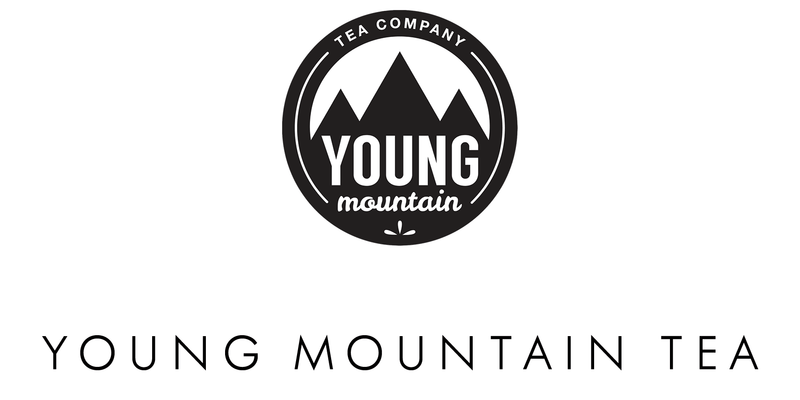How Black Tea Is Made

According to the National Cancer Institute, black tea accounts for 75% of the world's tea. My own first encounters with the world of Camellia sinensis came in the form of generic black tea in single-serving tea bags, steeped in mugs of microwaved hot water and heavily diluted with sugar and milk. But as I grew more interested in tea, I began to explore white, green, and oolong teas and leaving the mainstream steeps of my childhood behind. For some time, I was content to set aside the entire category of black tea, writing it off as conventional and uninteresting. Then, as I was traveling in India and considering launching Young Mountain Tea, I began spending time in tea factories and I discovered the depth and complexity of top-quality black teas—and to understand the precise, artful processes required to create them.
How Black Tea is Made
Black teas are made from the same plant as white, green, and oolong teas: Camellia sinensis. The distinctive colors and flavor profiles of each category of finished tea are the end result of tea processing steps: withering, heating, rolling, oxidization, and drying. If, when, and for how long each of these steps are applied determines the characteristics of a finished tea. The process of making black tea uses four of these steps to transform fresh, green leaves into the dark, full-bodied infusion that fills your cup. And when it comes to this classic tea variety, the key ingredients are oxygen and time.

The Process of Making Black Tea
Step 1: Wither
Freshly harvested tea leaves are spread out in an even layer in metal troughs, and fans are used to pull and push air across the leaves. The tea is left to wilt (or “wither”) for 10 to 14 hours, depending on the ambient conditions. This process traditionally took place outdoors with the help of air and sunlight, but today, tea makers primarily do it inside so they can more carefully control air circulation. During this time, humidity is carefully monitored, as achieving the desired amount of moisture loss is essential to creating the desired flavor in the final tea.
Step 2: Roll
In order to initiate the oxidation process responsible for black tea’s color and flavor, the cell walls of the tea leaves must be broken open through the rolling process, which can take anywhere from 5 to 60 minutes. Once done by hand, but now often done by machine, the act of massaging the tea leaves releases their enzymes and essential oils and exposes their compounds to the air, catalyzing chemical reactions with flavorful results.

Step 3: Oxidize
Once the leaves are activated through rolling, they are left to rest for up to eight hours of oxidation. It is during this stage that a noticeable metamorphosis from pale green to a rich golden brown occurs. Since oxidation takes place spontaneously at a wide range or room temperatures, this process will continue until the leaves are dried under heat.
Step 4: Dry
After the leaves have been allowed to react with the air for a sufficient time, they are placed in a dryer for finishing. The heat involved in this final phase halts the oxidation process and locks in the qualities developed at just the right levels. The typical drying temperature is ranges from 80-90 degrees Celsius (175-195 degrees Fahrenheit), applied for 20-25 minutes.
When each of the four steps have been completed correctly, the result is a beautiful, aromatic, perfectly balanced black tea, astringent rather than bitter when brewed, and exhibiting deep chords of flavor that may include caramel, cacao, rose, and even stone fruits or candy. Such rich and intriguing teas are a world away from what we most often encounter in the Western world, which is why I find such joy in helping the people in my community and beyond experience these amazing creations through Young Mountain Tea’s organic, whole-leaf Indian teas like Kumaon Joy, Darjeeling First Flush, Nilgiri Gold, and more.
EXPLORE THE ORGANIC BLACK TEA OFFERINGS IN OUR SHOP!
You might also enjoy:
Blog Author:

Raj Vable, Founder
He has been confounded by the leaf since his first transcendental encounter with white tea in 2010. Three years later, he started Young Mountain Tea to bridge his budding tea obsession with his interest in traveling in the mountains and previous experience creating job opportunities in rural India. He revels in working across cultures and can be regularly found trying to get the rest of the team on board with another outlandish tea project. His favorite teas remain white, and he’s always searching for the next cup of magic.





Comments on this post (5)
Thank you for sharing such a pleasant information.
I´ll share it with my friends in our next tea meeting.
Best Regards,
Carla
— Carla
Thank you so much for the useful information.
— Dr.L.Sumitra
Great information, thank you for sharing your knowledge and at some point, your traditions. I honestly enjoyed reading it and I am a black tea lover, and a visual learner as well, so your pictures provide a big support.
— Flora
Hi Alice! Thanks for your question. Since our expertise is strictly within single-origin straight teas (ie no blends, no flavors, nothing but the leaves of the tea plant), we can only speak to that. Within these teas, absolutely nothing is added, only water is removed. We’ve read that in the 1800s, the Chinese would add some color-fixing chemicals before selling teas to the British, but that was long ago caught and as far as we know, hasn’t been the case. Hope that helps and thanks again for reading!
— Young Mountain Tea
Thank you for this article on how black tea is made. At one time were antiseptics or solvents added to black teas and if so at which part of the process are they added? Thank you kindly, Alice
— Alice